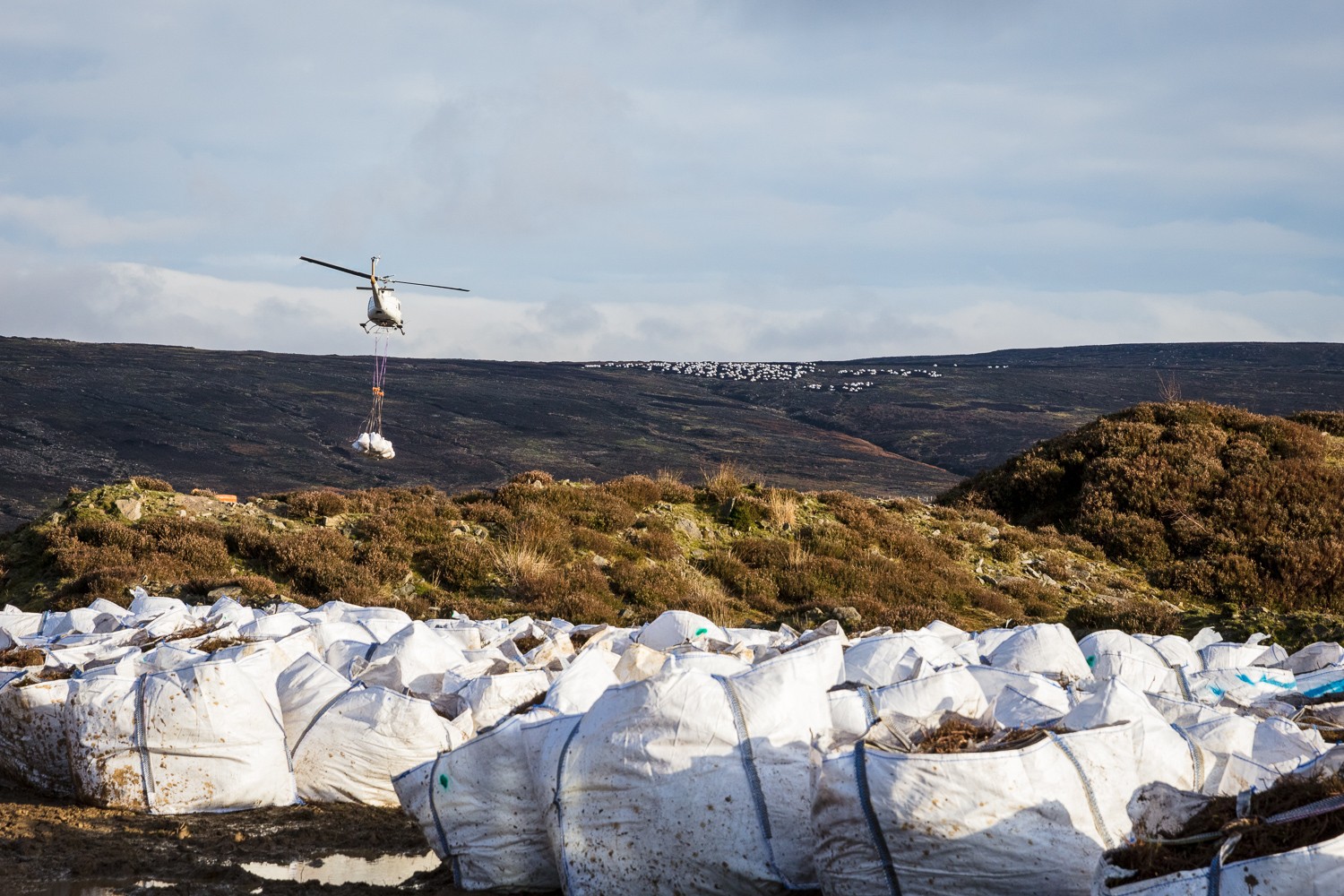Our biggest season yet
This season is our biggest ever for conservation works and whilst there is still much to do, the impressive numbers thus far continue to fly in. These numbers are from the last quarter of 2018.
Nearly 10,000 bags of heather brash have been flown by helicopter onto the moors and spread by hand. A helicopter can carry between 3–15 bags depending on the chopper and whether the bags have been rained on as rain makes them much heavier. 15 bags of heather brash can equal about a tonne and a half making helicopters hugely important to our work!

Despite December being a time of year when we don’t plant sphagnum moss, our artful officers still managed an impressive quarterly sphagnum plantathon. Nearly 500,000 sphagnum plug were planted! These numbers are impressive on their own, but a lot of work is often required before the planting can even begin. On Derwent and Howden moors in the Upper Derwent for example, six hectares of heather had to be cut before the planting could take place. The cut heather is collected and spread as heather brash elsewhere, whilst the cut areas provides some breathing space for the sphagnum to grow.
Nearly 2500 dams have been built into the erosion scars of gullies and grips. The dams have been a constructed out of a variety of materials. 850 of these dams were peat dams. Peat dams are made out of the peat itself and are impermeable, meaning they don’t allow water to pass through them. Pools of water form behind them creating ideal habitats for many insects such as crane flies which are an important source of protein for many wading birds such as golden plover.